A low-cost, open source, self-contained bacterial EVolutionary biorEactor
EVE
A low-cost, open source, self-contained bacterial EVolutionary biorEactor (EVE)
Vishhvaan Gopalakrishnan, Nikhil P. Krishnan, Erin McClure, Julia Pelesko, Dena Crozier, Drew F.K. Williamson, Nathan Webster, Daniel Ecker, Daniel Nichol, Jacob G Scott
Read the manuscript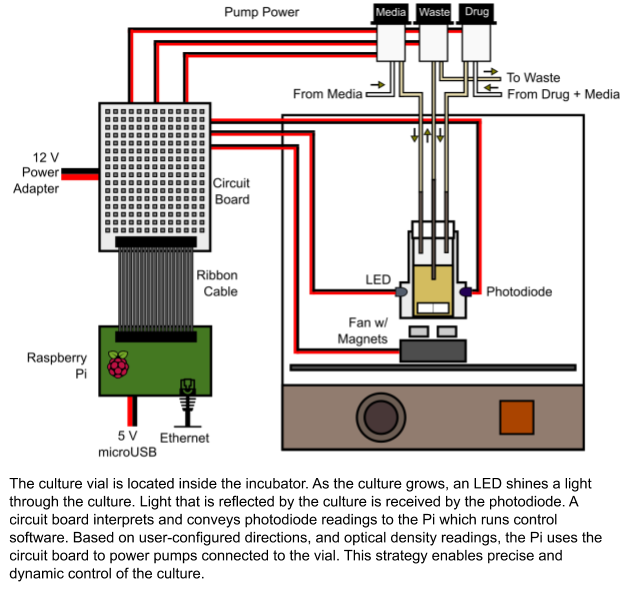 While the system is installed on Linux and primarily uses Python to perform all its functions, we wanted non-programmers and less computer-savvy users to be able to install the software painlessly. For maximal functionality, we implemented a web interface that can be accessed by many users. Furthermore, during experiments, users can also navigate to a plot server (run with Dash by plotly) to see how their experiments are progressing. The CU hardware addresses and experimental parameters can be defined by the configuration file. This file can be edited through the web interface or through the Linux command line with the configuration editor. The software is completely open source and can be found with instructions on the GitHub.
While the system is installed on Linux and primarily uses Python to perform all its functions, we wanted non-programmers and less computer-savvy users to be able to install the software painlessly. For maximal functionality, we implemented a web interface that can be accessed by many users. Furthermore, during experiments, users can also navigate to a plot server (run with Dash by plotly) to see how their experiments are progressing. The CU hardware addresses and experimental parameters can be defined by the configuration file. This file can be edited through the web interface or through the Linux command line with the configuration editor. The software is completely open source and can be found with instructions on the GitHub.
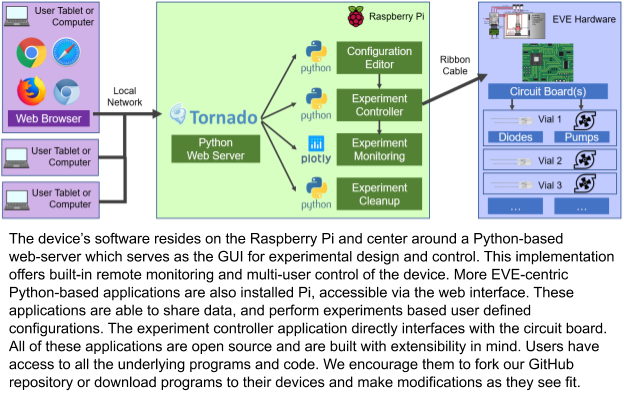 We define clear protocols and hardware to setup experiments within the paper. These protocols were inspired by those of the Krishony and Khalil lab. Pictures of the completed components are useful for users attempting to build the hardware themselves.
We define clear protocols and hardware to setup experiments within the paper. These protocols were inspired by those of the Krishony and Khalil lab. Pictures of the completed components are useful for users attempting to build the hardware themselves.
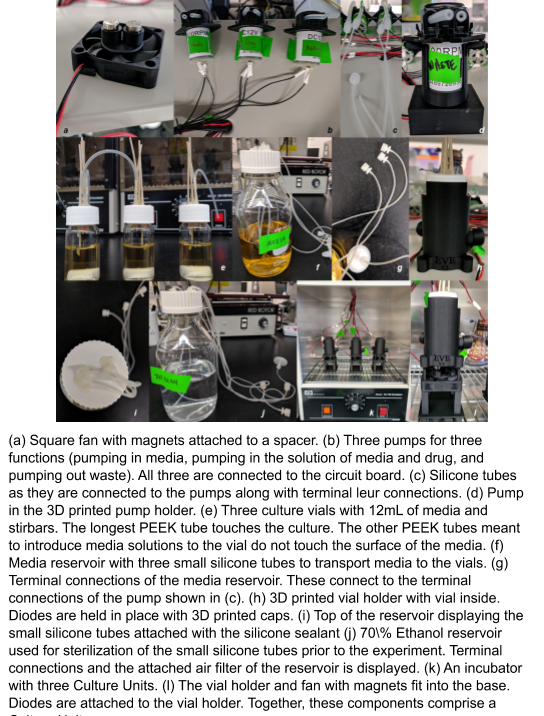 We demonstrate basic triplicate bacterial growth curves along with temperature sensor data during the experiment. This is an easy experiment for students to perform and is also useful as a test of the hardware prior to performing experiments.
We demonstrate basic triplicate bacterial growth curves along with temperature sensor data during the experiment. This is an easy experiment for students to perform and is also useful as a test of the hardware prior to performing experiments.
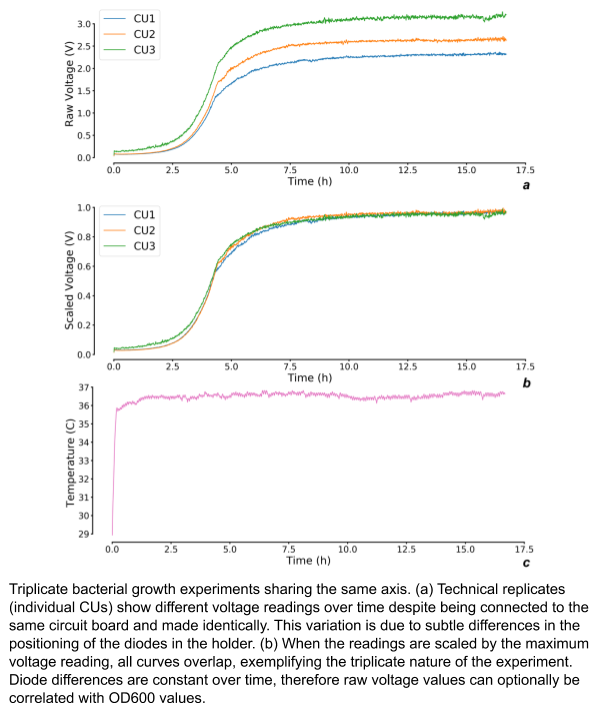 We also demonstrate an experiment that utilized ampicillin as the selective agent. This experiment is remarkable since it clearly demonstrates the development of resistance to ampicillin over the course of three days. This experiment demonstrates the control algorithm proposed by the Toprak paper. Other selection algorithms are also available within the software.
We also demonstrate an experiment that utilized ampicillin as the selective agent. This experiment is remarkable since it clearly demonstrates the development of resistance to ampicillin over the course of three days. This experiment demonstrates the control algorithm proposed by the Toprak paper. Other selection algorithms are also available within the software.
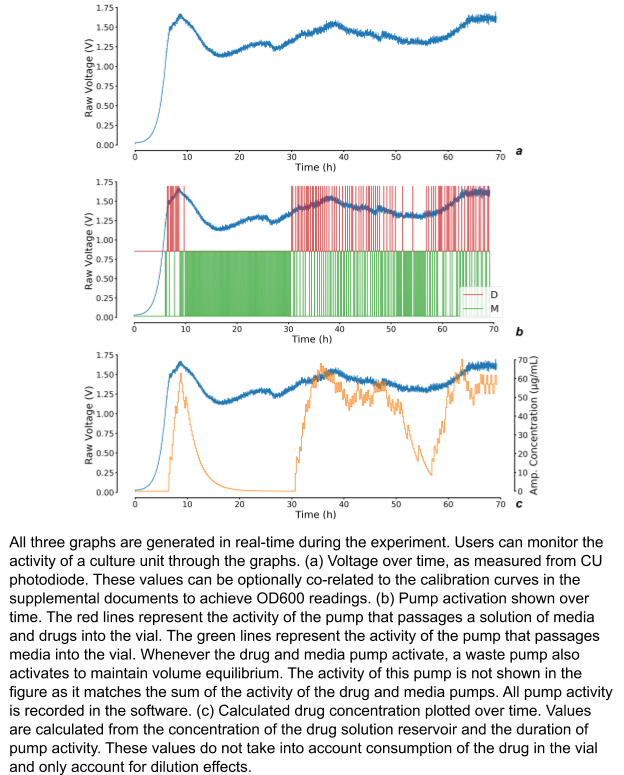 We believe that this framework will allow many scientific groups and students to learn about evolution through the lens of biotechnology. The open source nature of the project encourages collaboration and shared development between all the users of the system. The hardware and software design will continue to improve over time as users continue to use and modify this framework to answer their specific scientific questions.
We believe that this framework will allow many scientific groups and students to learn about evolution through the lens of biotechnology. The open source nature of the project encourages collaboration and shared development between all the users of the system. The hardware and software design will continue to improve over time as users continue to use and modify this framework to answer their specific scientific questions.
Vishhvaan Gopalakrishnan is a medical student at the Cleveland Clinic Lerner College of Medicine at Case Western Reserve University. Before that he received his bachelors and masters in biomedical engineering from the University of Michigan at Ann Arbor. He is passionate about developing open source software and building keyboards. Follow him on Twitter: @vishhvaan.
© 2025 - The Mathematical Oncology Blog